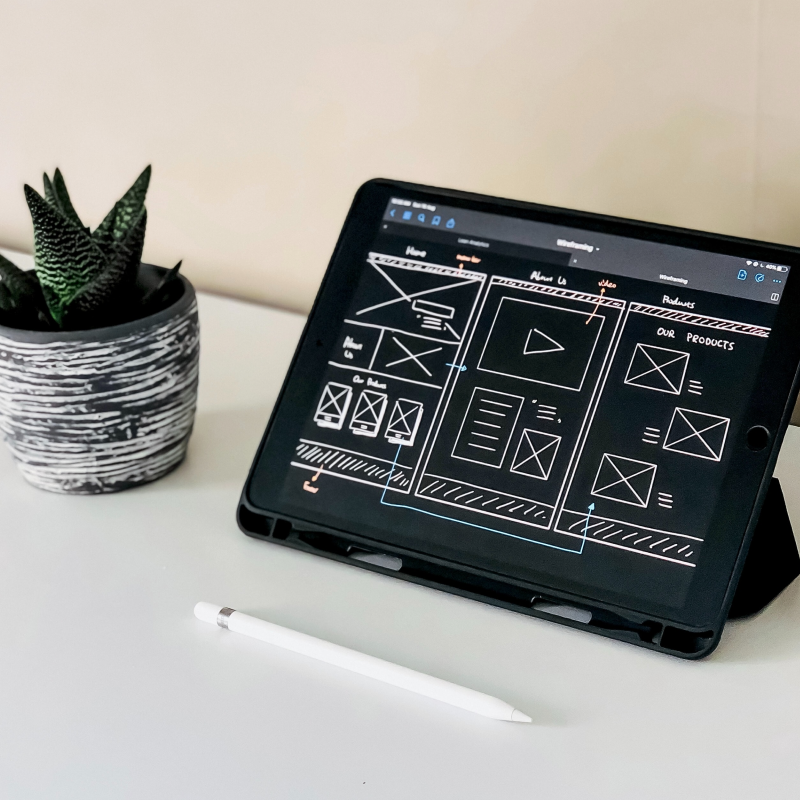What eCommerce Product Discovery is and How to Improve It

Quick Summary Keep reading to learn what product discovery is, how it helps you use customer preferences to make conversions, and how to use AI to improve product discovery on your site.
The eCommerce world is full of ways to direct customers to your website. That's a vital step, but it's just one part of a longer journey. After all, once you have people on your site, you still need to direct them to products they might want to buy. That's when a defined product discovery process becomes essential.
What Is Product Discovery?
Product discovery is the process a customer follows to find a product they want. It doesn't matter why a customer is looking for a product. They can be looking for something specific, like a certain size and style of shirt, or they can be looking around to see if they like anything. The customer could be looking for themselves or someone else, and they may not even be looking to buy anything, but instead are looking for ideas for a future purchase.
Regardless of what a customer wants or why they're shopping, product discovery is vital for the shopping experience. After all, if a customer can't find a product, they'll never be able to buy it.
What Does Product Discovery Have to Do with eCommerce?
Any business that sells products and goods needs to consider the product discovery process. However, it's particularly important for eCommerce sites. Why? Because the entire site should be dedicated to helping customers find products. Like a physical retail store, an eCommerce site should be designed to make it easy for customers to find and buy the products they're looking for.
An eCommerce store has the potential to make the product discovery process more robust and seamless than any other format. With eCommerce personalization, you can help customers find exactly what they are looking for, not just what customers like them have liked in the past. That makes each visitor more likely to buy from your brand instead of your competitors. The goal is to match the products to the customers by implementing AI technology and monitoring customer preferences.
You can't just personalize from one angle, of course. Your customers can and will get to your site through many different paths, from social media to marketplaces. To improve your product discovery process, you need to personalize the customers' experience no matter how they reach your site.
You can accomplish this by using dedicated AI technology to connect existing info to returning customers regardless of how they reached your site. You can even do this for first-time visitors with the right tools. That's where Syte can help. Syte is a product discovery platform that can help you accomplish discovery best practices on your site. Continue reading to learn more.
6 Best Practices for Improving Product Discovery for Your Customers
There are plenty of ways you might try to improve your product discovery process, but they're not all equal. These six best practices are the best solutions for providing a personalized eCommerce experience to your customers while helping them find what they want to buy.
1. Make sure your website is easy to navigate
The most fundamental element of product discovery is your website itself. Think of your site as a physical store. If a retail store is crowded, messy, and difficult to walk around, you probably won't spend much time there. The chance that you stay long enough to find the product you want is unlikely.
Your website can have the same problems. If your site is confusing and hard to read, your customers won't find what they want to buy. Even if they like how your site looks, they'll have to put in so much more effort to make a purchase that you're going to lose sales.
Instead, you need to prioritize eCommerce site navigation. A first-time visitor should be able to find different product categories and browse easily. It should also be easy to search your site for specific products, so customers who want particular items can pull them up without clicking through multiple different pages. When your site doesn't put barriers between customers and their purchases, you'll keep more traffic.
2. Provide filtering options
Once you've made your site easy to understand, you can take the next step and make searches easier to perform. The easiest way to do that is by adding great, robust filters. Many of your visitors are looking for a general object, like a shirt or a bar of soap. Filters let them narrow down what kind of item they want.
At a minimum, you should provide filters like:
Price range
Type of product
Color
In-stock
You can also provide filters for different collections, seasonal items, and sales. This helps shoppers narrow down what they're looking for based on their preferences. It can also give you helpful information. For example, you may find that people searching for a specific item also prefer to search for things within a certain price range. With those details, you can refine your own offerings to provide more items that fit your customers' needs.
See how we launch & scale brands on Shopify Plus with a data-backed approach
3. Optimize search results
Beyond filters, you can also improve your search results with optimization. No two customers want exactly the same items. If you have information about an individual customer, like their past purchases, you can show them products related to those purchases. For example, if someone had purchased bath towels from your spring collection and, later, visits your site for hand towels, optimized search results would present the hand towels from your spring collection first.
This is part of showing the right products to the right people. Optimized search results use AI to learn from a customer's past behavior and provide useful, interesting results for each customer. This helps visitors appreciated and makes your site more appealing. Providing tailored results instead of a simple list of all the products that meet their search criteria in alphabetical order makes your site more useful.
4. Optimize your homepage
Your homepage is the first page your customers will visit most of the time. While they may occasionally land on a specific product or landing page because of your marketing campaigns, most traffic to a site starts with the homepage. That's why you should make sure your homepage is optimized for the product discovery process.
One way to accomplish this is by showing relevant products on your homepage. A responsive homepage can show products based on a visitor's past behavior. Just like optimized search results, your homepage can display product recommendations related to the person's past purchases, popular items, and new releases.
5. Prioritize site speed
Think back to the last time you were online shopping. How long did it take product pages to load? Did you stick around on websites that took ages to load a single page? If you're like most people, the answer is no.
According to studies done on large sites like Amazon, a slow-loading page is poison to your conversion rates. Sites with faster loading times see a 16.5% increase in the number of conversions they made. Meanwhile, the slower a page loads, the worse it is for your revenue. You may lose 1% of your revenue for every tenth of a second longer it takes your site to load.
That's why site speed is vital for your product discovery process. Customer searches should complete quickly, and each individual page should load as fast as possible. People won't stick around to look at your products if they feel like they're wasting time, so make speed a priority.
6. Try to "read the customer's mind"
Sometimes, your customers will search your site for products and keywords that simply don't exist. This might be because they made a typo, because they call a certain item by a different name, or because you just don't offer that product. When this happens, you have two choices: show no results, or make smart product recommendations.
Now, you're no mind-reader, but you can get pretty close with your eCommerce site. With the right technology, you can recommend items that are as similar to those keywords as possible. A product discovery AI can take keywords entered by your visitors and search your website to find the closest match among your products. This act of "reading your customer's minds" helps keeps them on your site and looking at what you do offer, instead of leaving when it looks like you don't have what they need.
Improve Product Discovery with eCommerce Personalization and AI Technology
The best way to enhance product discovery is with AI. The right artificial intelligence system can take the information you've already collected from your customers to produce better product recommendations that meet individual visitors' preferences.
You don't have to develop or implement an AI on your own. Syte can do the work for you. With Syte's advanced artificial intelligence technology, you can improve your product discovery automatically. There's no better way to offer eCommerce personalization and meet customer preferences. Get started today by contacting us about how we can integrate Syte with your store today.



